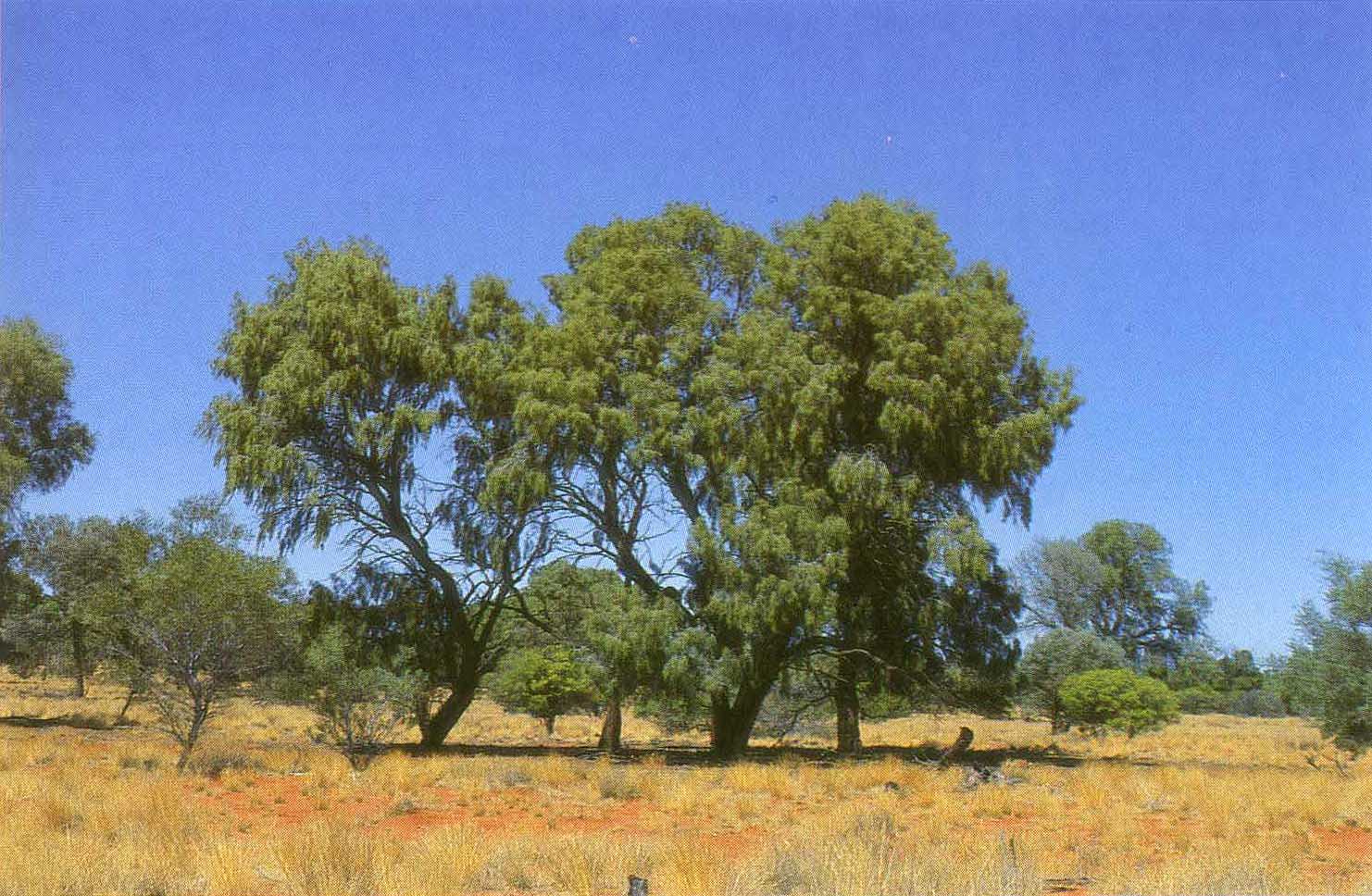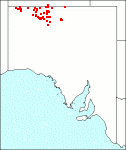Family: Fabaceae
Acacia estrophiolata

Citation:
F. Mueller, S. Sci. Rec. 2 (7):150 (1882).
Derivation: e (L.)— without; strophiola (L.)—an aril.
Synonymy: Racosperma estrophiolatum (F. Muell.) Pedley, Austrobaileya 2:348 (1987).
Common name: ironwood
Description:
Erect, graceful trees 8-15 m high with a long bare trunk and a spreading light green crown; branchlets slender and pendulous; bark smooth and silvery-grey on branchlets, rough and fissured on main trunk.
Phyllodes linear, straight or slightly curved, 4-10 cm long, 2-4 mm broad, glabrous, 3 obvious longitudinal veins and a number of well spaced rather obscure anastomosing veins; apex acute and straight or slightly curved; glands small, on upper margin 1-2 cm from the base.
Inflorescences axillary and solitary or twin; flower-heads pale yellow, c. 30-flowered; peduncles thin, 5-10 mm long, glabrous; flowers 5-merous.
Legumes linear, 6-10 cm long, 5-7 mm broad, stipitate, flattish, margins thickened, often unevenly constricted between the seeds. Seeds longitudinal in legume; funicle short, filiform, without an aril.
|
|
Distribution:
|
Ironwood occurs as scattered trees in the far North-Western region from the Mann Ranges eastwards through the Musgrave and Everard Ranges to the Lake Eyre region just north of Oodnadatta. In tall shrubland to open woodland, associated with Acacia aneura mainly on low hills, open flats and flood plains. Soils; mainly red earthy sands, neutral red earths. Rainfall 125-200 mm. Also W.Aust. and N.T.
S.Aust.: NW, LE, GT.
|
Flowering time: At irregular periods throughout the year usually after good rain.
|

SA Distribution Map based
on current data relating to
specimens held in the
State Herbarium of South Australia
|
Biology:
No text
Related taxa:
Acacia excelsa is also known as Ironwood but this species mainly occurs in the sub-humid areas of north-eastern N.T., Qld and N.S.W.
Taxonomic notes:
A. estrophiolata bark is used by Aborigines as a wash for the treatment of skin complaints. The gum when softened is also used on sores and burns and in addition the sweet gum may be eaten as food. The bark gave negative results in tests for alkaloids while the leaves tested positively. A phytochemical analysis of the root bark is also given, Barr et al (1988).
A. estrophiolata is reported by Isaacs (1987) to be a source of both gum and seeds for Aboriginal consumption.
The juvenile growth phase of A. estrophiolata is distinctive, as the plants are shrubby, the phyllodes broader and erect and often in small clusters. It is not until maturity that the elegant weeping form with longer slender phyllodes is achieved.
Cultivation:
A very handsome graceful tree suitable for planting in the arid inland for ornamental, shade, shelter and fodder purposes.
Author:
Not yet available
Source:

|

